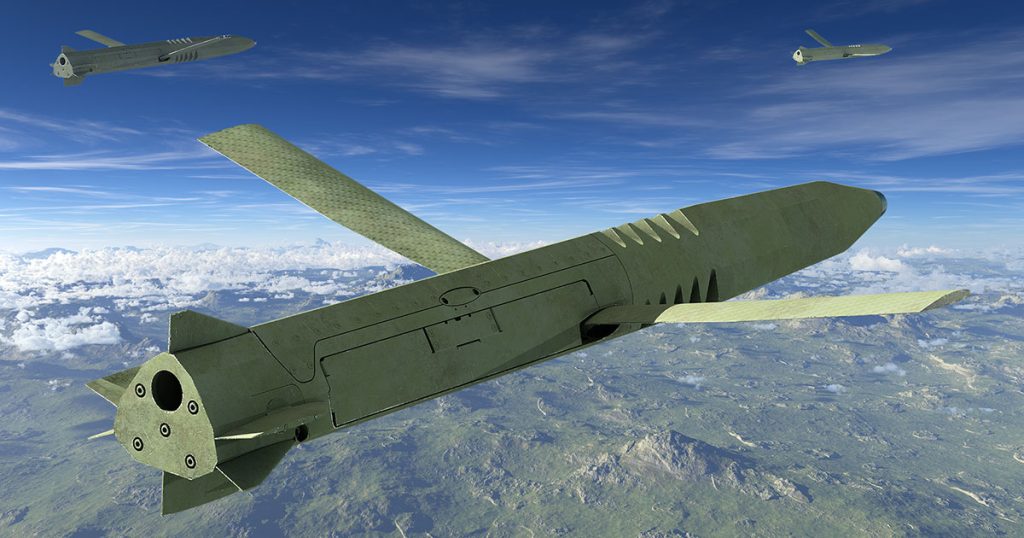General Atomics contracted to advance LRMP
General Atomics Electromagnetic Systems (GA-EMS) is to further develop its Long Range Manoeuvring Projectile (LRMP) under a contract awarded by the US Navy, according to a 2nd December press release. The contract will develop the LRMP so that it can meet the US Navy’s common round offensive strike capabilities at an increased range using fielded 155 mm artillery systems.
“We are in preparations for upcoming LRMP Common Round glide testing at Dugway Proving Grounds in Utah as part of the first contract task order. Additional milestone testing and follow-on tasks will be completed throughout the contract’s five-year period of performance to design, manufacture, assemble and test LRMP rounds for 155 mm artillery systems as well as other platforms,” the head of GA-EMS weapons programs, Mike Rucker, stated.
The round is intended to be used by existing artillery systems and is compatible with legacy launchers, autoloaders and handling equipment, according to GA-EMS. The US Army and Marine Corps use the M109 in a number of variants and the towed M777, both are 155 mm systems with ranges exceeding 30 km depending on the munition used. When compared to the LRMP’s range of 120 km, the benefits of the new round are relatively clear.
At the 2023 Sea-Air-Space Exposition, Nick Bucci, Vice-President of Defence Systems & Technologies at General Atomics, discussed the scalability of the LRMP with plans for it to be scaled to a 127 mm variant suitable for the U.S. Navy’s 62-calibre Mark 45 Model 4 gun system. The current Mk 45 gun uses a round with a range of 36km, whereas Bucci commented that they believed their 127mm LRMP would have a reduced range of 75 km.
Although GA-EMS intends to prioritise the completion of the LRMP 155mm variant, the additional development of the 127mm variant would be an effective addition to the U.S. Navy’s arsenal at a reduced cost to alternative munitions capable of such range. The project has been self-funded for the past three years; however, with this new development, GA-EMS is prepared to initiate low levels of production in 2025.
Tech profile: LRMP

The LRMP is designed for long-range precision strike, indicating that it will be intended for the deep fight. Credit: GA-EMS.
The LRMP is a surface-to-surface precision strike munition fired from 155 mm artillery systems with a range of at least 120 km. The round is enclosed within a disposable sabot, which preserves the structural integrity of the round during the launch phase; at the round’s peak height, reported to be between 40,000 and 45,000 feet, the LRMP’s wings deploy, and the glide phase begins. The wings of the LRMP allow the round to stabilise and increase its range without auxiliary propulsion; additionally, the reuleaux shape allows for more control and lift during the glide phase. The LRMP has increased manoeuvrability, enabling it to engage static, mobile and obstructed targets. The prototype is reportedly guided by machine learning (ML) and cameras within the round, with one camera located on the nose and the second facing downward; the combination of sensors and ML enables the round to reach its target independent of GPS guidance.
Calibre comment
General Atomics is not alone in its endeavour to produce long-range precision artillery; BAE Systems has initiated development of the Scorpio-XR XM1155-SC, a 155 mm howitzer-launched projectile with a range exceeding 110 km. Conventional M795 unguided 155mm shells have a circular error probable (CEP) of roughly 140 metres compared to the XM982/Excalibur produced by Raytheon and BAE systems, which has a range of 60km and CEP of less than 20 metres. However, whilst significantly more accurate, the XM982 costs roughly $68,000, over 80 times the cost of the M795 (2021 estimate of $820 per shell). The hope with precision munitions is often that increased accuracy will reduce the number of rounds needed to defeat a target, which is sometimes the case, but not always. As Amos Fox notes, the paradox of precision strike munitions is that they may not always achieve the desired effect, leading to the same level of destruction as unguided weapons.
In any case, the GA-EMS has over twice the XM982/Excalibur’s range exceeding 120 km and is advertised as having a “reduced cost per kill”, which means it is more likely thought of as a weapon for deep targets or even ships, than for engaging targets in the close fight.
By Austin Haywood, published on 6th December 2024.

Sign Up for Updates!
Get insider news, tips, and updates. No spam, just the good stuff!





